Papers by Dimitrios Dapontas
This paper tries to explain the recent currency crisis in Iceland and draw some policy lessons. I... more This paper tries to explain the recent currency crisis in Iceland and draw some policy lessons. It shows that the recent currency crisis in Iceland is mainly due to a loose monetary policy preceding the crisis. Structural reforms which could have prevented the occurrence of the crisis were missing. We choose to explain the crisis using a least squares method where a set of fundamental per capita , real sector and institutional variables are combined and compared to the Euro zone ones in order to explain the November 2008 turbulence. The results show that the 2008 credit crunch in us economy was relevant to the crisis in Iceland joined by the fundamentals of the country's economy was the reason for this inconvenience.
Current Aspects in Business, Economics and Finance Vol. 3
International Journal of Science and Management Studies (IJSMS)
The Present manuscript is presenting the economic history of Bulgaria as a candidate country to j... more The Present manuscript is presenting the economic history of Bulgaria as a candidate country to join the Eurozone. The difficulties have been overcome under the bond to Deutsche Mark scheme back in 1997. European Union participation in 2007, fiscal health and ERM II participation since 2020 have enchased country’s plans to be a part of Euro in 2024 despite any current members disbelief, divided public opinion and global tension.
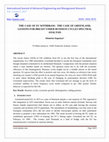
The recent choice (2016) of UK withdraw from EU is not the first loss of the international organi... more The recent choice (2016) of UK withdraw from EU is not the first loss of the international organization. In a 1985 referendum, Greenland decided to secede the European Community even though remained constituted to its motherland Denmark. Comparisons with the present situation where a state member quails are obvious. The question arises has to do with the economic efficiency of this disintegration. Business cycles length can be a reliable answer to the raised question. If it grows then the effect is positive and vise versa. We deploy as reference time series checking out country's GNP growth in an annual frequency for sixty-six years (1950-2016) split to parts where breaking point is the year of changing its participation decision (1981 for Greenland respectively). The results show that Greenland did not manage to get the level of economic stability in lower frequency cycle trends compared to pre 1981 period. Similar behavior is expected for the UK.
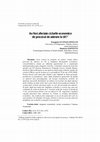
Suedia și Marea Britanie) ne-am aplecat inițial asupra datelor anuale ale creșterii PIB pe cap de... more Suedia și Marea Britanie) ne-am aplecat inițial asupra datelor anuale ale creșterii PIB pe cap de locuitor pe o perioadă de 59 de ani (1950-2008). Pentru fiecare țară intervalul studiat a fost împărțit în două perioade: preaderare și postaderare. Apoi, după eliminarea zgomotelor de fundal cu ajutorul unei periodograme, am început examinarea curbelor de densitate spectrală. Rezultatele au indicat că în primii ani după aderare țările tindeau să aibă cicluri mai scurte decât în perioada precedentă. În a doua fază ciclurile deveneau egale cu cele ale perioadei pre-aderare. În final, după mai mulți ani, lungimea ciclurilor a crescut așa cum este evidențiat de curba în forma de J. Această curbă de creștere în formă de J este caracteristică țărilor care au aderat la UE, sugerând o legătură cauzală puternică între aderarea la Uniune și evoluția fluctuațiilor economice. Am verificat prin comparație cu un set de patru țări care nu sunt membre UE (Islanda, Norvegia, Elveția și Turcia) și nu am...
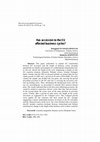
Theoretical and Applied Economics, 2013
This paper undertakes to explain the relationship between EU accession and the length of business... more This paper undertakes to explain the relationship between EU accession and the length of business cycles, focusing specifically on whether participation in a multinational organization has, or has not, altered the length of the cycle. Employing a sample of nine EU countries (Austria, Denmark, Finland, Greece, Ireland, Portugal, Spain, Sweden and the UK) we focused initially on annual data for per capita growth in GDP over a period of 59 years (1950-2008). For each country the sample was divided into two parts, one covering the period preceding accession to the EU and one is covering the accession year and succeeding years. Then, eliminating the background noise with the use of a periodogram, we proceeded to examine their spectral density plots. The results indicated that in the first years following accession, the countries tended to experience shorter cycles than they had previously. In the second phase the cycles were of the same duration as previous cycles. Finally, after a perio...
The present work is trying to cover the need for a Real Exchange Effective Rate in Albania. The b... more The present work is trying to cover the need for a Real Exchange Effective Rate in Albania. The bank of the country didn’t tend to keep this series which is important for competitiveness measure, encloses political risk and was crucial for the development of explanation model of recent empirical works on currency crises and it seem to work well. The results shown that monthly REER was statistically significant and it had negative effect to the possibility of currency crisis occurring. I use the PPP Real Exchange Rate for the set of the countrys’ trade partners weighted in their share to the Albanian trade balance, combined with price level (CPI) spread and nominal exchange rates for a fourteen year period in monthly frequency (January 1995- December 2008). I select a theoretical framework suitable for the examined country and I propose the methodology for further use.

This paper will present the relationship between public warnings and level of smoking dependence ... more This paper will present the relationship between public warnings and level of smoking dependence during economic crisis for the country with the highest rate of tobacco consumption in European Union (Greece). We deploy a sample of 540 questionnaires analyzed by catreg method. Dependence from smoking is the under examination variable related to a set of variables based on state preventing measures and demographic characteristics of the sample. Four of them (Ban effect on number of cigarettes, Respect on previous measures, possible total ban on entertainment frequency and smoking at closed places) seem to have negative effect on smoking dependence while other two (State insufficiency and discriminations against smokers) have positive. Women seem to be more addicted on the other hand higher educated people along with married people with children are less smoking fond. Keywords: Dependence, Greek crisis, Smoking, State legislation .
This manuscript is presenting the facts of crisis in Greece and especially the mortality raises. ... more This manuscript is presenting the facts of crisis in Greece and especially the mortality raises. Using a set of seven variables proposed by earlier authors (Alcohol and tobacco consumption, crisis(lagged) and unemployment(lagged), Number of heart attacks and suicide attempts and health expenditure per capita) respectively. Under an exact statistic method (Robust Least Squares) for a 38-year period (1979-2016). The results show that six variables had positive relation to mortality but the effect of the two lagged variables needed one year to show. Health expenditure per capita cuts had the expected negative effect.
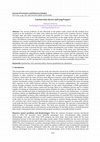
Journal of Economics and Behavioral Studies, 2012
The current problems on the aftermath of the global credit crunch left the weakest Euro countries... more The current problems on the aftermath of the global credit crunch left the weakest Euro countries in the turbulence of a debt crisis, which has been spread in five countries (Greece, Ireland, Portugal, Italy and Spain respectively) and raised the question of a Euro zone future survival. The surviving barriers have to do with limitations and restrictions on the single market, the lack of political union and different monetary policy targets. Incentives to secede are also present. However, a possible withdraw of a country would have high cost for all the participants and it could lead to monetary union’s demolition. The costs related with a possible withdraw are high, thus it is difficult for a country to leave a union. In the recent debt crisis, the countries accepted bailouts from their counterparts and international organizations in order to prevent the Euro zone collapse spreading the crisis further. Three possible Euro zone future scenarios are analyzed. The volunteer or not br...
Handbook of Research on Financial and Banking Crisis Prediction through Early Warning Systems
This chapter is presenting the most contemporary crises following the 2008 credit crunch and smal... more This chapter is presenting the most contemporary crises following the 2008 credit crunch and small scale following crises. Our sample consists of five countries (Cyprus, Greece, Ireland, Portugal and Argentine respectively) hit by crisis during 2010's. The Early Warning System (EWS) proposed is the Extreme Value Model (EVA) used previously for natural disasters and irregular phenomena. Its major advantage compared to other binary models is its focus to the turbulence periods and their characteristics contrast to possible trend models which exclude them. The results show that EVA fits better forecast and it gave positive and calm signals than similar logit and probit models for all five cases examined.
Journal of Economic Issues, 2008
This paper seeks to explain the causes of turbulence in foreign exchange markets in selected tran... more This paper seeks to explain the causes of turbulence in foreign exchange markets in selected transition Economies (Albania, Belarus, Bulgaria, Croatia, FYROM, Moldova, Romania and Ukraine), by using a set of CATREG models and introducing explanatory ...

Ovidius University Annals Economic Sciences Series, 2012
This paper is based on finding the characteristics that could have made the crises in weaker Euro... more This paper is based on finding the characteristics that could have made the crises in weaker Eurozone economies forecastable based on lagged time series analysed as a set of binary models estimated with the extreme value approach which is suitable for irregular non stationary data on rare events. This method has been used in order to predict the possibility of rare events such as earthquakes, floods or other unpredictable by trend disasters. This methodology has major advantages compared to probit or logit approaches. The absence of currency volatility due to monetary union participation makes this crisis analysis unique and extends the definition of the possible incidents. My sample consists of four countries bailed-out by European Union and IMF joint mechanism (Cyprus, Greece, Ireland and Portugal respectively) and covers a seventeen years period (1995-2012).The results show that explanatory variables predicted the incidents of bailout.
Annals of the Alexandru Ioan Cuza University - Economics, 2013
Annals of the Alexandru Ioan Cuza University - Economics, 2012
Annals of the Alexandru Ioan Cuza University - Economics, 2014
The flow work is focused around discovering the aspects that fixed Argentina's during the rec... more The flow work is focused around discovering the aspects that fixed Argentina's during the recent (2014) crisis nation's destiny. Variables focused around prior analysis utilizing the logistic regression model conveyed for a twelve years period (2002-2013 to clarify the occurrence and checking whether conceivable elements could be foreseeable. The results demonstrate that foreign exchange reserves reduction, monetary aggregates (M3) raise, crises in trading partners, oil price and consumer price index level seem to boost early 2014 turbulence and they also predicted accurately the forthcoming crisis. Also the development of the phenomenon was rapid giving positive signs later than the previous works suggested. The capital flight named as the major factor that led to depreciation is statistically unimportant.
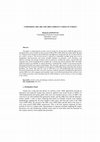
This paper is comparing the currency crises in Turkey for 20 years (from 1990 till today) and to ... more This paper is comparing the currency crises in Turkey for 20 years (from 1990 till today) and to distinguish their causes divided in three periods (1990-1995), (1995-2002) and (2002-2009). My goal is to compare these incidents to find similarities and differences among them for the very first time for the country’s analysis. The forward spread is selected as a dependent variable along with a set of independent macroeconomic and social variables (balance of payments, crisis elsewhere, real effective exchange rate, foreign exchange reserves, gold price, lending rate, money, external debt and consumer price level) examining these variables for a twenty year period (January 1990- December 2009) the largest set availiable in refered literature I examined their relation to the forward spread, following the feasible least squares methodology. This innovative approach is used for the first time in the field and it has the major advantages of least squares methodology along with panel data a...
Working Papers, 2009
This paper tries to explain the recent currency crisis in Iceland and draw some policy lessons. I... more This paper tries to explain the recent currency crisis in Iceland and draw some policy lessons. It shows that the recent currency crisis in Iceland is mainly due to a loose monetary policy preceding the crisis. Structural reforms which could have prevented the occurrence ...

Uploads
Papers by Dimitrios Dapontas